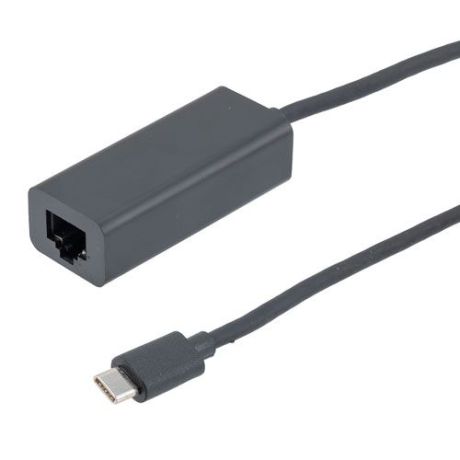The store will not work correctly in the case when cookies are disabled.
JavaScript seems to be disabled in your browser.
For the best experience on our site, be sure to turn on Javascript in your browser.
USB to Gigabit Ethernet Adapter - USB Type C to RJ45
Gigabit | IEEE 802.3 Specs | LED Indicator | Connect to Internet Through USB Port
Quantity Discount Pricing
1-2
3-5
6-7
8-9
10+
$44.59
$41.64
$39.16
$36.21
$33.73
Quantity Available: 184
The USB to Ethernet adapter allows you to convert a USB 3.1 port to a communication Ethernet port, ready to connect to your LAN or internet. This adapter is great for older computers without an ethernet port. with its compact size, it is portable and can be used on most internet ready devices.
Features
Gigabit USB specification 3.1 compliant Supports USB Suspend/Resume Detection Logic Fully compliant with IEEE 802.3 Specification Supports various low power Mode WHQL Compatible hardware LED working indicator Works on any USB 3.1 Type C ports including, but not limited to the following operating systems.... Win 98/2K/XP/Vista/7/8/8.1/10/CE
Q: What’s the difference between the different USB versions?
USB 1.1 Released in 1998 Specifies max data rates of 12 Mbit/s (Full Speed) Mostly used on devices such as keyboards mice joysticks printers scanners. Still used by some devices that don't need faster data transfer rates. USB 2.0 Released in 2000 Specifies max data rates of 480 Mbit/s (Hi-Speed) Compatible with USB 1.1 but some hardware designed for USB 2.0 may not work with USB 1.1 host controllers. USB 3.0 Released in 2008 Specifies max data rates of 5 Gbit/s (SuperSpeed) A January 2013 press release from the USB group reveals plans to update USB 3.0 to 10 Gbit/s to put it on par with Thunderbolt by mid-2013. Q: What if I need to extend my current USB cable past the 16 foot distance limit?
A: Because passive USB cables have a distance limitation you would need an Active Extension Cable to help boost the signal coming from the source.
Q: I'm unsure what USB adapter or connector I need can you help?
A: Please click on the resource tab to see the USB connector graph. This should help identify the correct cable.
USB Connector Guide
Connector Type
Picture
Common Use
USB 2.0 A Male
Commonly plugged into the USB port on a computer
USB 2.0 A Female
Commonly used for extending the length of an existing USB cable. USB A Male is able to plug into this connector
USB 2.0 B Male
Commonly used on a printer external hard drive and other USB Devices
USB 2.0 Micro Male
Commonly used on new smartphones and other USB devices
USB 2.0 Mini Male
Commonly used on cell phones digital cameras and GPS devices
USB 2.0 Mini Female
Commonly used to extend the length of an existing USB mini cable
USB 3.0 A Male
Commonly used on USB 3.0 devices
USB 3.0 B Male
Commonly used on USB 3.0 printers and other USB devices
USB 3.0 Micro
Commonly used on USB 3.0 hubs and other devices

